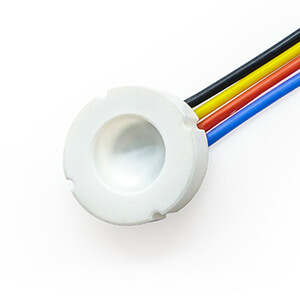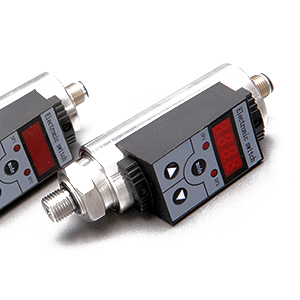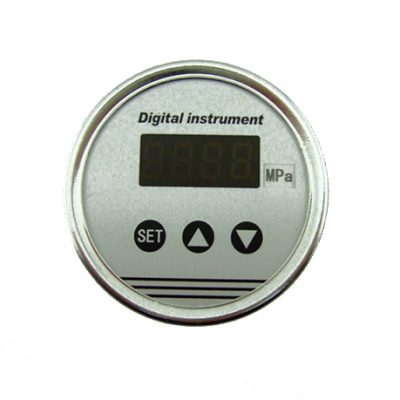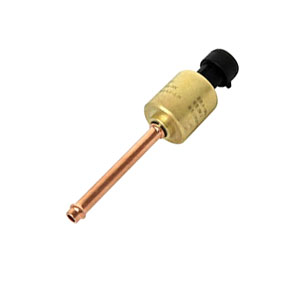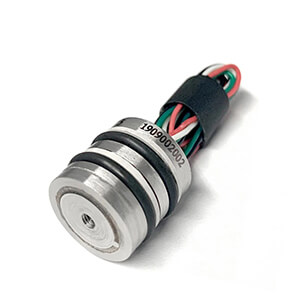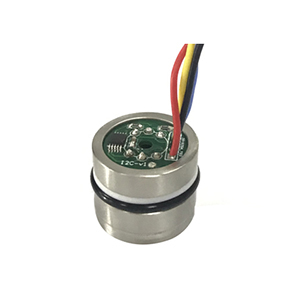What is air pressures sensor?
An air pressure sensor, also known as a barometric sensor, is an electronic device that is designed to measure atmospheric pressure. It is used to detect, monitor, and control air pressure levels in different types of environments, including industrial, automotive, meteorological, and medical settings.
Air pressure sensors operate by sensing the pressure of air in the surrounding environment using piezoelectric, capacitive, or piezoresistive sensing elements. Once the sensor detects the pressure changes, it converts the information into an electrical signal, which can be transmitted to the display or electronic controls. The air pressure can then be measured, recorded, or controlled, depending on the application and requirements.
In daily life, air pressure sensors are used in a wide range of applications, including weather monitoring, altitude measurement, and tire pressure monitoring in cars. In weather monitoring, air pressure sensors are used to measure and forecast weather changes by detecting changes in atmospheric pressure. In cars, air pressure sensors are used to monitor tire pressure and air intake pressure, which can help drivers optimize their fuel consumption, increase safety, and extend the lifespan of their tires.
In addition, air pressure sensors are used in medical settings for monitoring the lungs’ air pressure and detecting respiratory disorders, such as chronic obstructive pulmonary disease (COPD) or sleep apnea, and in HVAC systems to measure or control air pressure and temperature.
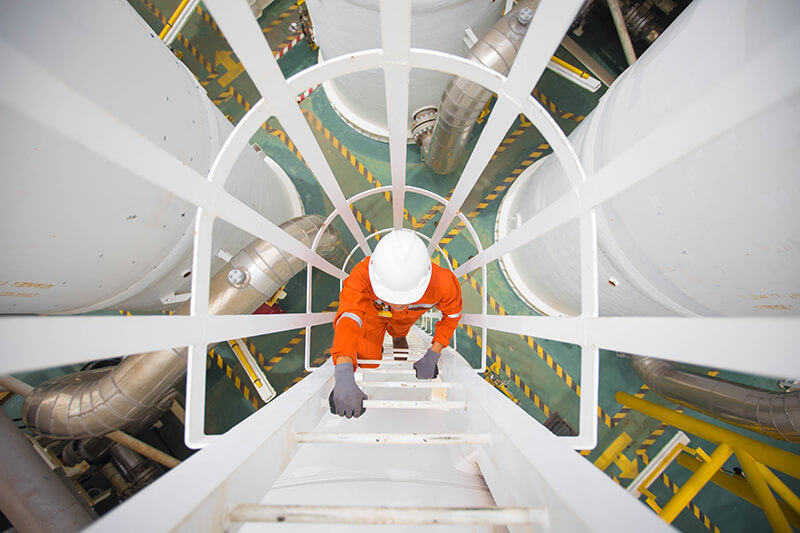
How air pressure sensor works
Different air pressure sensor technologies exist, but the most common ones are piezoresistive, capacitive, and MEMS-based sensors.
Piezoresistive air pressure sensors:
Piezoresistive sensors consist of a diaphragm and a resistive element, such as a strain gauge. When air pressure is applied to the diaphragm, it deflects, causing a change in the resistance of the strain gauge. This change in resistance is proportional to the applied pressure and can be measured to determine the air pressure.
Capacitive air pressure sensors:
Capacitive sensors have a diaphragm and a fixed plate separated by a small gap, forming a capacitor. When air pressure is applied to the diaphragm, it moves closer to or further away from the fixed plate, changing the capacitance of the capacitor. This change in capacitance is proportional to the applied pressure and can be measured to determine the air pressure.
MEMS-based air pressure sensors:
MEMS (Micro-Electro-Mechanical Systems) air pressure sensors are miniature devices that use microfabrication technology to create pressure-sensitive structures on a silicon substrate. These sensors typically employ piezoresistive or capacitive sensing principles to measure air pressure. MEMS sensors are known for their small size, low power consumption, and high sensitivity.
Regardless of the technology used, air pressure sensors generally convert the physical pressure changes into an electrical signal, which can be amplified, processed, and displayed or transmitted for further analysis or control purposes.
What is the difference between other pressure sensors?
Air Pressure Sensor:
Description
An air pressure sensor measures the pressure of the surrounding air, which is also known as atmospheric or barometric pressure. These sensors are used in applications like weather monitoring, altitude measurement, and HVAC systems. Essentially, an air pressure sensor tells you the pressure of the air around you.
Application
- Weather monitoring: Air pressure sensors are used in weather stations to measure barometric pressure, which helps in predicting weather changes and forecasting weather conditions.
- Altitude measurement: Air pressure decreases with altitude, so air pressure sensors can be used in devices like altimeters and GPS systems to determine elevation.
- HVAC systems: In heating, ventilation, and air conditioning (HVAC) systems, air pressure sensors help regulate airflow and maintain a comfortable indoor environment.
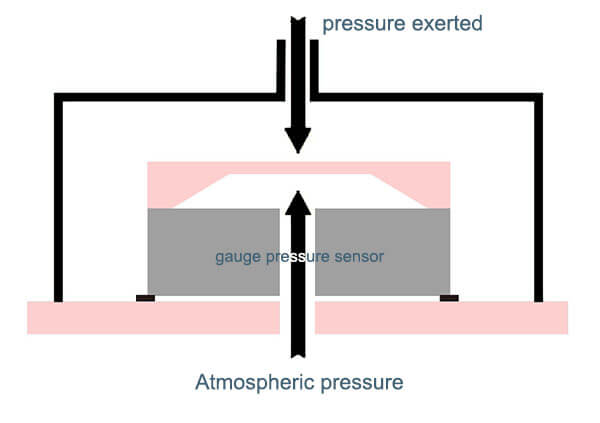
Absolute Pressure Sensor:
Description
An absolute pressure sensor measures the pressure of a gas or liquid relative to a perfect vacuum (zero pressure). In other words, it compares the pressure being measured to the complete absence of pressure. Absolute pressure sensors are commonly used in applications like leak detection, vacuum systems, and barometric pressure measurement.
When using an absolute pressure sensor, you get a measurement that takes into account the atmospheric pressure as well.
Application
- Leak detection: Absolute pressure sensors can detect pressure changes due to leaks in sealed systems, such as refrigeration units or vacuum chambers.
- Vacuum systems: In vacuum pumps and other vacuum equipment, absolute pressure sensors monitor and control the level of the vacuum to ensure proper operation.
- Barometric pressure measurement: Absolute pressure sensors can be used to measure atmospheric pressure for weather monitoring and altitude measurement applications.
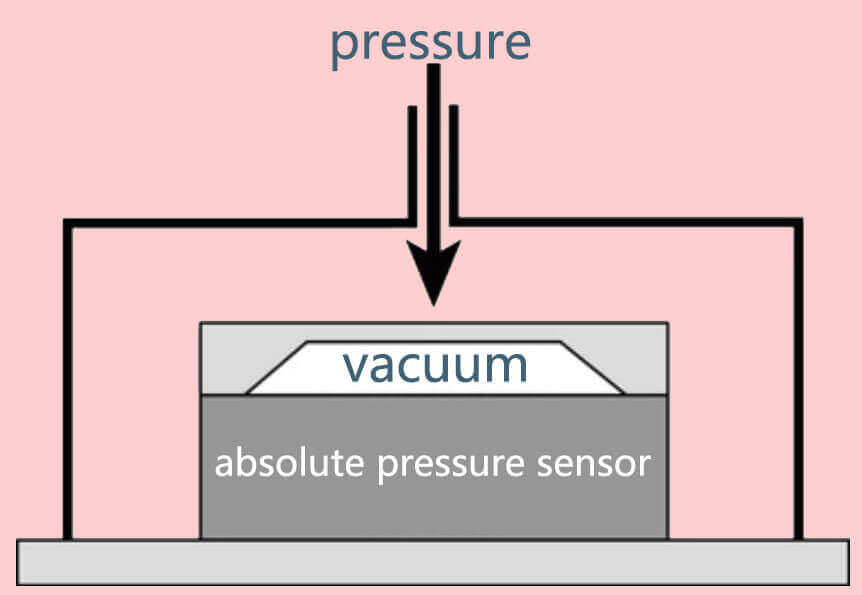
Differential Pressure Sensor:
Description
A differential pressure sensor measures the difference in pressure between two points or two pressure sources. Instead of providing an absolute pressure value, a differential pressure sensor compares the pressures at these two points and gives you the difference between them. Differential pressure sensors are often used in applications like flow measurement, filter monitoring, and HVAC systems to ensure proper air distribution.
Application
- Flow measurement: Differential pressure sensors are used in flow meters to measure the flow rate of fluids (gas or liquid) in pipes by detecting the pressure drop across a constriction or an orifice.
- Filter monitoring: In HVAC systems and industrial processes, differential pressure sensors can monitor the pressure difference across filters to detect clogs or contamination
- HVAC systems: Differential pressure sensors help maintain proper air distribution in ducts by measuring and controlling the pressure differences between different areas or zones.
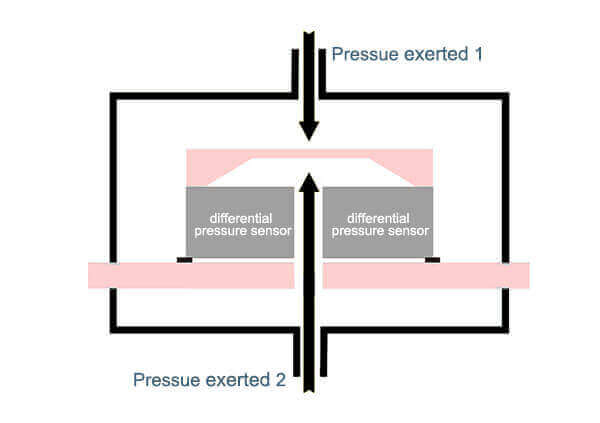
What should take into consideration when choosing air pressure sensor
When choosing air pressure sensors, absolute pressure sensors, or differential pressure sensors for your application, consider the following factors:
Pressure range:
Ensure the sensor can measure the pressure range required for your application, whether it’s low, medium, or high pressure.
Accuracy:
Choose a sensor with an accuracy level that meets the demands of your application. High-precision sensors may be needed for critical measurements, while lower-accuracy sensors could be sufficient for less demanding applications.
Resolution:
Select a sensor with adequate resolution to detect the smallest pressure changes relevant to your application.
Response time:
Consider the sensor’s response time, especially if you require fast pressure measurements or real-time control.
Temperature and humidity:
Make sure the sensor can operate within the temperature and humidity range of your application environment.
Media compatibility:
Ensure the sensor’s materials are compatible with the gas or liquid being measured, especially if corrosive or aggressive substances are involved. Find more details of pressure sensors for corrosive
Sensing technology:
Choose the appropriate sensing technology (e.g., piezoresistive, capacitive, MEMS, etc.) based on the specific needs of your application. Check the Guide of Sensing Technology.
Electrical interface:
Select a suitable electrical interface (e.g., 4-20 mA, 0-10 V, RS485, wireless) that is compatible with your system and provides reliable communication.
Installation and mounting:
Consider the sensor’s size, shape, and mounting options to ensure it can be easily installed and integrated into your system.
What technology is for air pressure sensor
Air pressure sensors can be based on various sensing technologies, some of which are:
Piezoresistive:
Piezoresistive air pressure sensors use a diaphragm and a resistive element, such as a strain gauge. When air pressure is applied to the diaphragm, it deflects, causing a change in the resistance of the strain gauge. This change in resistance is proportional to the applied pressure and can be measured to determine the air pressure.
Capacitive:
Capacitive air pressure sensors have a diaphragm and a fixed plate separated by a small gap, forming a capacitor. When air pressure is applied to the diaphragm, it moves closer to or further away from the fixed plate, changing the capacitance of the capacitor. This change in capacitance is proportional to the applied pressure and can be measured to determine the air pressure.
MEMS (Micro-Electro-Mechanical Systems):
MEMS air pressure sensors are miniature devices that use microfabrication technology to create pressure-sensitive structures on a silicon substrate. These sensors typically employ piezoresistive or capacitive sensing principles to measure air pressure. MEMS sensors are known for their small size, low power consumption, and high sensitivity.
Optical:
Optical air pressure sensors use changes in light properties, such as intensity or wavelength, to measure air pressure. These sensors often rely on optical fibers or other light-sensitive components and can be immune to electromagnetic interference.
Check the Guide of Sensing Technology.
Wrap up
When choosing an air pressure sensor, ensure it covers the required pressure range and provides adequate accuracy and resolution for your application. Consider the sensor’s response time, especially for real-time monitoring and control.
Make sure it can operate within the temperature and humidity range of your application environment and that its materials are compatible with the gas or liquid being measured. Select a suitable electrical interface and output signal type that is compatible with your system.
By understanding these factors, you can make informed decisions when selecting air pressure sensors that meet your specific requirements while being aware of potential limitations and taking appropriate precautions to mitigate potential issues.

